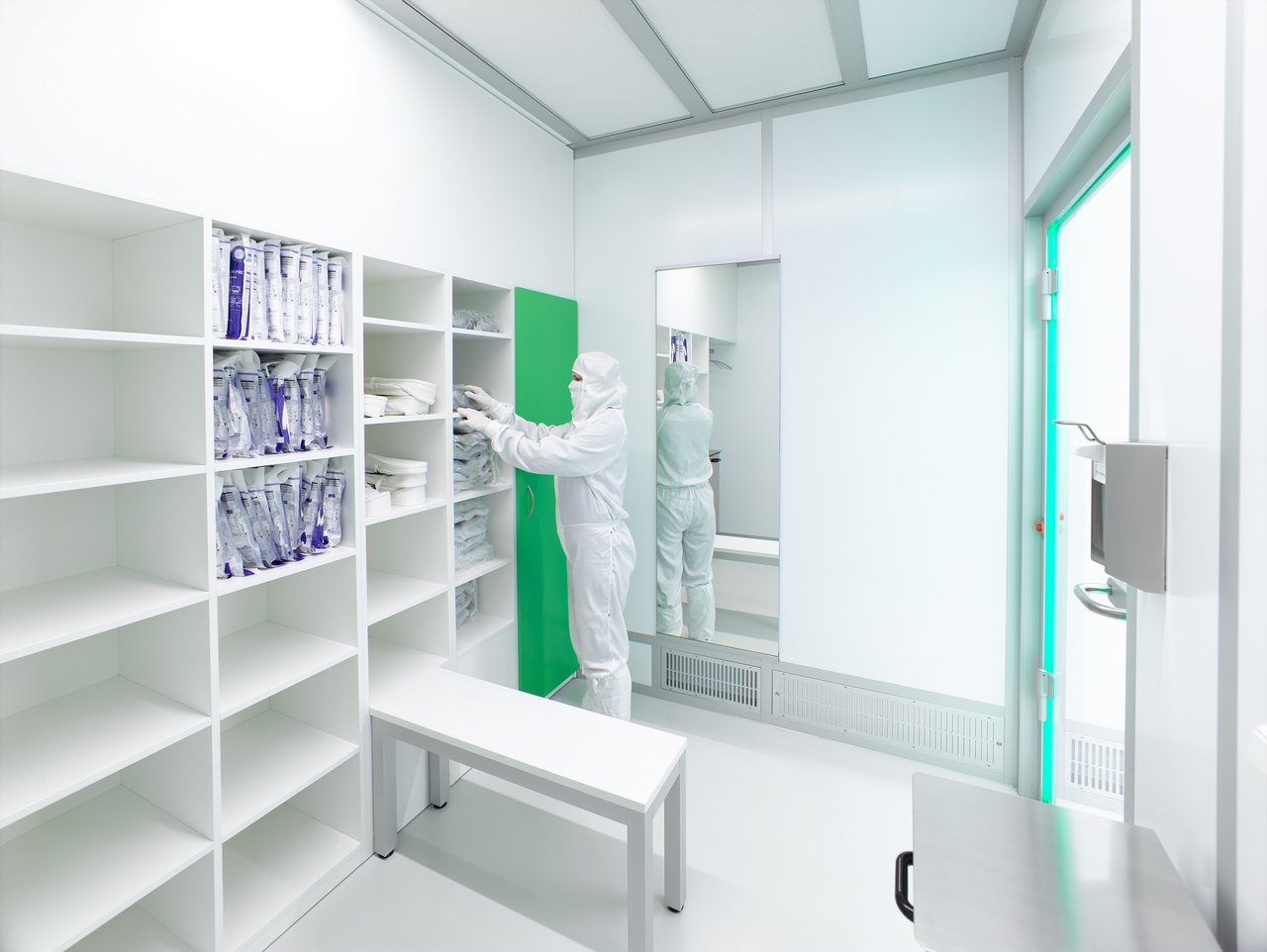The correct planning of personnel airlocks is a very important point in the overall concept of a cleanroom production. What considerations should be made in advance?
1. Why does a cleanroom need a personnel airlock?
- to allow entry into a higher cleanliness class without endangering the process running in it
- to dress and undress personnel
- to lock and unlock personnel
- for storage and provision of cleanroom clothing
Humans are the greatest source of danger with regard to the introduction of contaminants into the cleanroom. By far the highest proportion of foreign particles that can endanger production in the cleanroom enter the cleanroom with the personnel. If a cleanroom is entered by employees or visitors, it must be ensured that the purity of the air in the cleanroom is not compromised. In particular, the donning of specific cleanroom clothing reduces the release of particles from people and street clothing.
Therefore, personnel airlocks are located between the outside area and the cleanroom to serve as changing rooms while providing a barrier to carry as few particles as possible into the cleanroom.
2. Determine the size of the airlocks
Personnel airlocks must be set up in such a way that the dressing and undressing of personnel is performed safely, ergonomically and in a time-saving manner. Therefore, airlocks are equipped with cleanroom-specific furnishings that serve to store clothing and structure and facilitate the changing process (e.g., sinks, dispensers, coat closets, sitovers, mirrors, waste collectors).
When determining the size and layout of a personnel lock, a number of factors must be considered in advance. This means that, if possible, the use of personnel in the final design should be considered as early as the cleanroom planning stage.
The following questions should already be considered during the planning stage:
- What is their clothing concept for the required cleanroom class?
- Which garments should be put on where and in which order?
- Are there any process-specific clothing requirements?
- What type of clothing is used (disposable/reusable)?
- How many people are working in the cleanroom at the same time per shift?
- How many shifts are scheduled?
- Are there male and female employees? Can they use a common changing area?
- Are personal lockers with locking facilities required?
- According to which sorting should the repackaged garments be provided? (Size/ per employee)
- Is a sink desired in the locker room?
By answering these questions, the equipment with dispenser systems will be arranged to save space, so that only as much space as necessary is considered.
3. number of airlocks per cleanroom class
Particles are released or introduced in the personnel airlock during every insertion process. These are "flushed out" with pure air during the stay. Airlocks in the transition from one cleanroom zone to the next should have the cleanroom class of the next room when at rest. This ensures that if access is permitted after the sluice purging time, the following room is not endangered.
The number of personnel airlocks required for safe entry thus depends on the required cleanroom class. For higher cleanroom classes, several personnel airlocks are recommended:
| cleanroom class | ISO 8 | ISO 7 | ISO 6 | ISO 5 | GMP D | GMP C | GMP A/B |
| number of airlocks | 1 | 1 | 2 | 3 | 1 | 2 | 3 |
In some cases, the airlocks are also combined with air showers, as they are practically intended to replace an airlock.
4. Pressure cascades
To prevent contamination, the following technical precautions must be taken during cleanroom operation:
- Prevention of uncontrolled air flow into the cleanroom.
- Avoidance of pressure drop
Airlocks are used to maintain so-called pressure cascades. Pressure differences between the outside area, the airlocks and the cleanroom prevent particle movement into the cleaner zones. In the case of higher cleanliness requirements, zones with several pressure levels are formed in order to provide the greatest protection for the most sensitive zones.
Pressure differences of 5-20 Pascal (according to ISO 14644-4) or 5-15 Pascal (according to GMP Annex 1) between the different cleanroom classes are used to achieve a targeted flow of air. In order to maintain the pressure cascades, the doors of the airlocks are in principle interlocked alternately. This interlocking ensures that only one of the two doors can be opened at a time, so that there is no sudden loss of pressure.
The pressure zones are selected for the spaces with control tolerances in such a way that the control system can ensure that no pressure reversal can occur.
